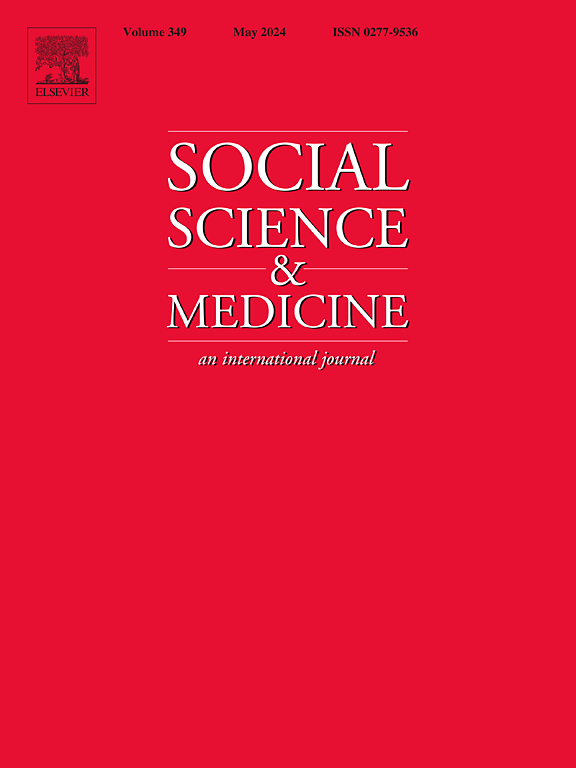Do nudges need a regulatory push? Comparing the effectiveness and implementation of exemplar nudge (size-based) and non-nudge (price-based) dietary interventions
IF 4.9
2区 医学
Q1 PUBLIC, ENVIRONMENTAL & OCCUPATIONAL HEALTH
引用次数: 0
Abstract
Changing behaviour across populations is key to improving population health and achieving net zero by 2050, including changing diets. We examine the extent to which nudges, with the potential to contribute to such change, are being implemented alongside traditional approaches. We compare the effectiveness and extent of implementation into policy of two interventions to improve diets: size-based interventions that alter portion, package or tableware size, commonly considered a nudge; and, price-based interventions, including food-item taxes, not considered a nudge.
We conducted four rapid reviews: two for systematic reviews with meta-analyses aimed to determine the effectiveness of size-based and price-based interventions, respectively; and two for reports to estimate the extent to which size-based and price-based interventions have been implemented in health or environment policies of governments, public authorities, or private sector organisations, at national or sub-national levels.
Both sets of interventions were consistently found in research studies to be effective at reducing consumption and purchasing of unhealthy products, but price-based interventions have been implemented in policies far more often than size-based ones. At least 118 countries have implemented taxes on sugar sweetened beverages (SSBs), and 42 countries have implemented taxes on unhealthy foods. In contrast, we identified 20 reports of size-based interventions implemented at sub-national level, of which only one involved regulation.
Explaining and reversing the lack of implementation of size-based interventions and other effective nudges merits prioritisation to help realise global ambitions to improve population health and achieve net zero by 2050.
推动需要监管推动吗?比较助推(以规模为基础)和非助推(以价格为基础)饮食干预的有效性和实施情况
改变所有人群的行为,包括改变饮食,是改善人口健康和到2050年实现净零目标的关键。我们研究了在多大程度上推动了这种变化,并与传统方法一起实施。我们比较了两种改善饮食的干预措施的有效性和实施程度:基于尺寸的干预措施,改变份量、包装或餐具的大小,通常被认为是一种推动;此外,以价格为基础的干预措施,包括食品税,也不被认为是一种推动。我们进行了四次快速回顾:两次系统回顾与荟萃分析,旨在分别确定基于规模和价格的干预措施的有效性;两份报告用于估计在国家或国家以下各级政府、公共当局或私营部门组织的卫生或环境政策中实施基于规模和基于价格的干预措施的程度。研究一致发现,这两套干预措施在减少不健康产品的消费和购买方面都是有效的,但在政策中实施以价格为基础的干预措施的次数远远多于以规模为基础的干预措施。至少118个国家对含糖饮料(SSBs)征税,42个国家对不健康食品征税。相比之下,我们发现了20份在次国家层面实施的基于规模的干预措施的报告,其中只有一份涉及监管。解释和扭转缺乏实施基于规模的干预措施和其他有效推动措施的情况,值得优先考虑,以帮助实现改善人口健康和到2050年实现净零的全球雄心。
本文章由计算机程序翻译,如有差异,请以英文原文为准。
求助全文
约1分钟内获得全文
求助全文
来源期刊

Social Science & Medicine
PUBLIC, ENVIRONMENTAL & OCCUPATIONAL HEALTH-
CiteScore
9.10
自引率
5.60%
发文量
762
审稿时长
38 days
期刊介绍:
Social Science & Medicine provides an international and interdisciplinary forum for the dissemination of social science research on health. We publish original research articles (both empirical and theoretical), reviews, position papers and commentaries on health issues, to inform current research, policy and practice in all areas of common interest to social scientists, health practitioners, and policy makers. The journal publishes material relevant to any aspect of health from a wide range of social science disciplines (anthropology, economics, epidemiology, geography, policy, psychology, and sociology), and material relevant to the social sciences from any of the professions concerned with physical and mental health, health care, clinical practice, and health policy and organization. We encourage material which is of general interest to an international readership.
 求助内容:
求助内容: 应助结果提醒方式:
应助结果提醒方式:


